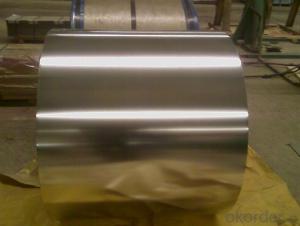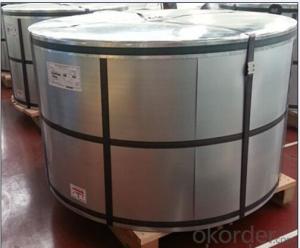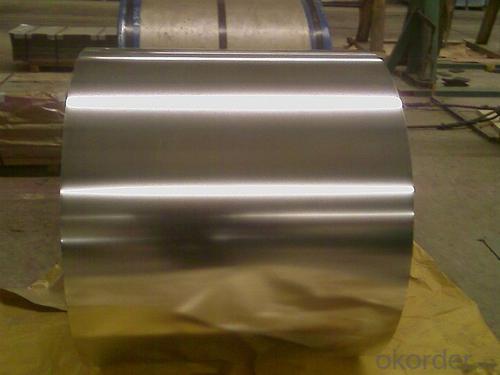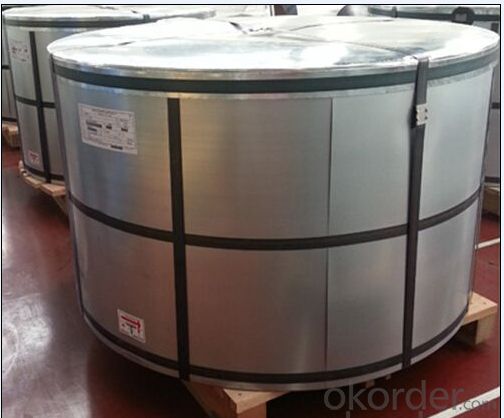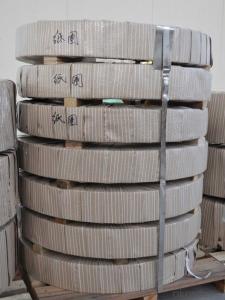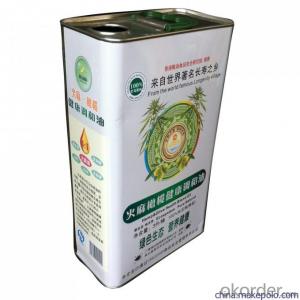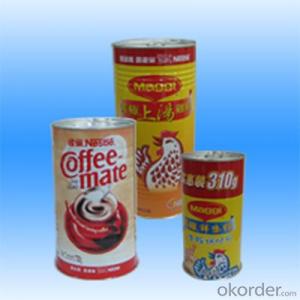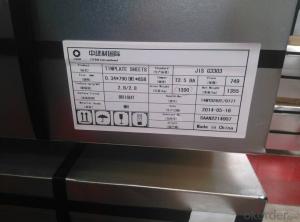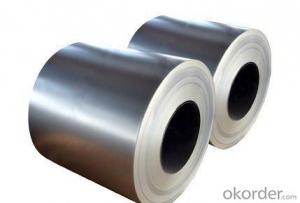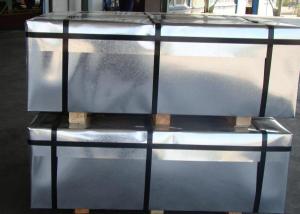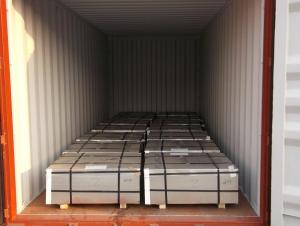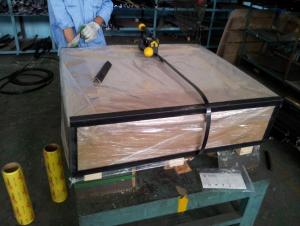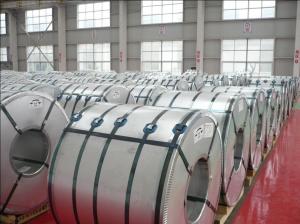Prime Grade Tinplate for Milk Powder Cans, MR Material
- Loading Port:
- Tianjin
- Payment Terms:
- TT OR LC
- Min Order Qty:
- 25 m.t.
- Supply Capability:
- 40000 m.t./month
OKorder Service Pledge
OKorder Financial Service
You Might Also Like
Specification
1. Specification
standard: GB/T2520, JIS G3303, DIN EN10202
Material: MR /SPCC
Thickness available: 0.16-0.50MM
Width available: 600~1050MM
Temper grade: T1 – DR8
Tin coating: ordinary 2.8g/2.8g, 5.6g/5.6g and others
Package: sea worthy export package.
Applications: Tin can for chemicals & paint cans, industrial cans, food cans
2. Our production steps
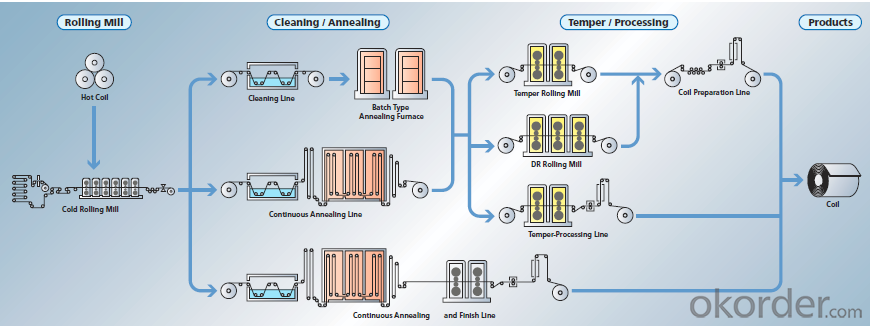
5. Usage Scope
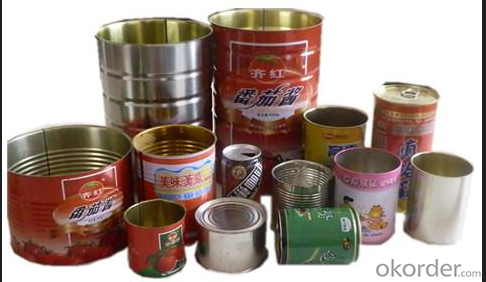
3. Our euxport market
our tinplate has been popularly exported to more than 30 countries, including Asia, Europe countries, Gulf area, Sounth America, Northe & South Afric etc.
4. FAQ
a. what’s your company name?
our company named CNBM international corporation, we are both one large state owned company and tinplate supplier in China
b. where your mill situated?
Our head office is in Beijing, while our mill in Hebei province.
c. how about the delivery time?
usually 55~65 days after receipt advance payment or original LC;
d. what payment term you accept?
Our payment term is very feasible, such as TT, DP, LC at sight, LC after sight etc.
e. can you offer MTC?
Of course, we will issue MTC after each shipment, for customer reference and testing if some quality issue appears.
- Q: How does tinplate handle exposure to UV radiation?
- Tinplate is not resistant to UV radiation and can undergo degradation or discoloration when exposed to prolonged sunlight.
- Q: What are the different methods of joining tinplate components together?
- There are several methods for joining tinplate components together. Some common techniques include soldering, spot welding, adhesive bonding, and mechanical fastening. Each method has its advantages and is chosen based on factors such as the complexity of the assembly, desired strength and durability, and cost considerations.
- Q: Are there any health concerns associated with tinplate packaging?
- Yes, there are potential health concerns associated with tinplate packaging. Tinplate packaging can contain traces of heavy metals, such as lead or cadmium, which can leach into the packaged food or beverage, posing a health risk if consumed. Additionally, tinplate packaging may also contain a thin layer of plastic coating that can potentially release harmful chemicals into the food or drink. It is important to ensure that tinplate packaging is properly regulated and that food and beverage manufacturers comply with safety standards to minimize these health risks.
- Q: Tin plated tin plated?
- Galvanized steel / strip is easy to retreat, the damage to the substrate is very small, but also to ensure the production of rust in the stamping process, you can use.
- Q: Can tinplate be used for packaging non-food items?
- Yes, tinplate can be used for packaging non-food items. Tinplate is a versatile material that offers excellent durability, corrosion resistance, and tamper-proof properties. It is commonly used for packaging various non-food products such as cosmetics, pharmaceuticals, aerosol cans, and household goods.
- Q: Can tinplate be used for high-pressure containers?
- No, tinplate is not suitable for high-pressure containers as it lacks the necessary strength and durability to withstand such pressure.
- Q: What are the main differences between tinplate and tinplate laminates?
- Tinplate and tinplate laminates are similar in that they both consist of a thin layer of tin applied to a base material, typically steel. However, the main difference lies in their composition and properties. Tinplate is a single-layer material with a tin coating on one or both sides, providing excellent corrosion resistance and a shiny appearance. On the other hand, tinplate laminates are composed of multiple layers, with tin coatings sandwiched between layers of other materials, such as paper, plastic, or aluminum. This combination enhances the product's functionality, offering benefits like improved barrier properties, additional strength, and enhanced printability. Therefore, while tinplate is suitable for various packaging applications, tinplate laminates offer a wider range of options and versatility.
- Q: What are the main differences between tinplate and tinplate laminates in terms of shelf life?
- The main difference between tinplate and tinplate laminates in terms of shelf life is that tinplate laminates offer better protection against external factors such as moisture and oxygen. The lamination process involves bonding a layer of plastic or other materials to the tinplate, providing an additional barrier against corrosion and contamination. This enhanced protection helps to extend the shelf life of products packaged in tinplate laminates compared to those in regular tinplate.
- Q: Does the tinplate have a tensile rate? Thank you heroes!
- Elongation or section shrinkage is the main index of plasticity of metal materials. The quality of plasticity depends on many factors, and the material is only one of them. For example, temperature and stress state will also affect the plasticity. Marble in high-pressure liquid can also be a good extension of humor.
- Q: How does tinplate perform in terms of durability and longevity?
- Tinplate is highly durable and long-lasting due to its corrosion-resistant properties. It can withstand harsh environmental conditions and is resistant to rust and oxidation, making it ideal for various applications where durability is crucial. Additionally, tinplate's longevity is further enhanced through proper coating and maintenance, ensuring its longevity even in demanding environments.
Send your message to us
Prime Grade Tinplate for Milk Powder Cans, MR Material
- Loading Port:
- Tianjin
- Payment Terms:
- TT OR LC
- Min Order Qty:
- 25 m.t.
- Supply Capability:
- 40000 m.t./month
OKorder Service Pledge
OKorder Financial Service
Similar products
Hot products
Hot Searches
Related keywords
